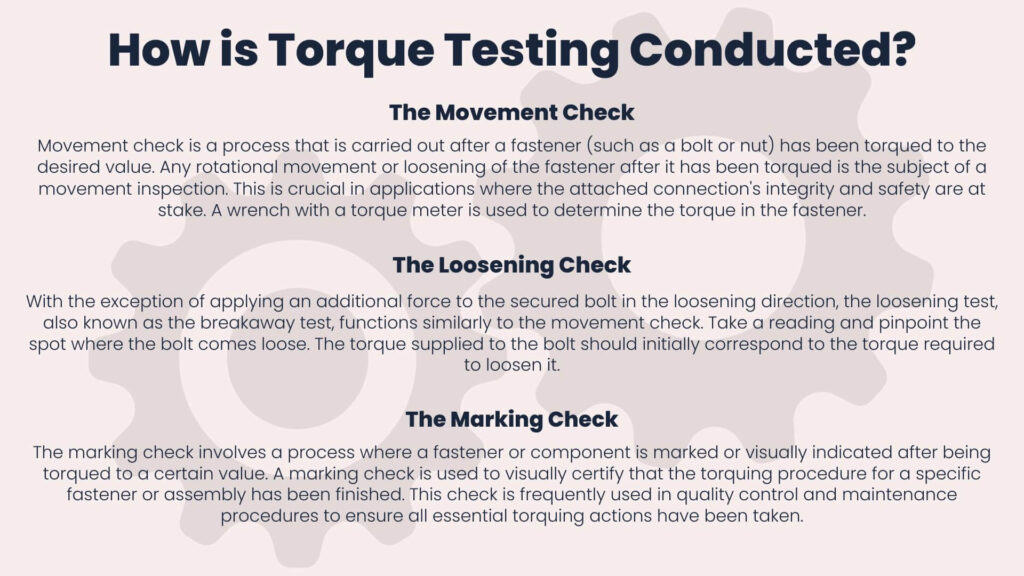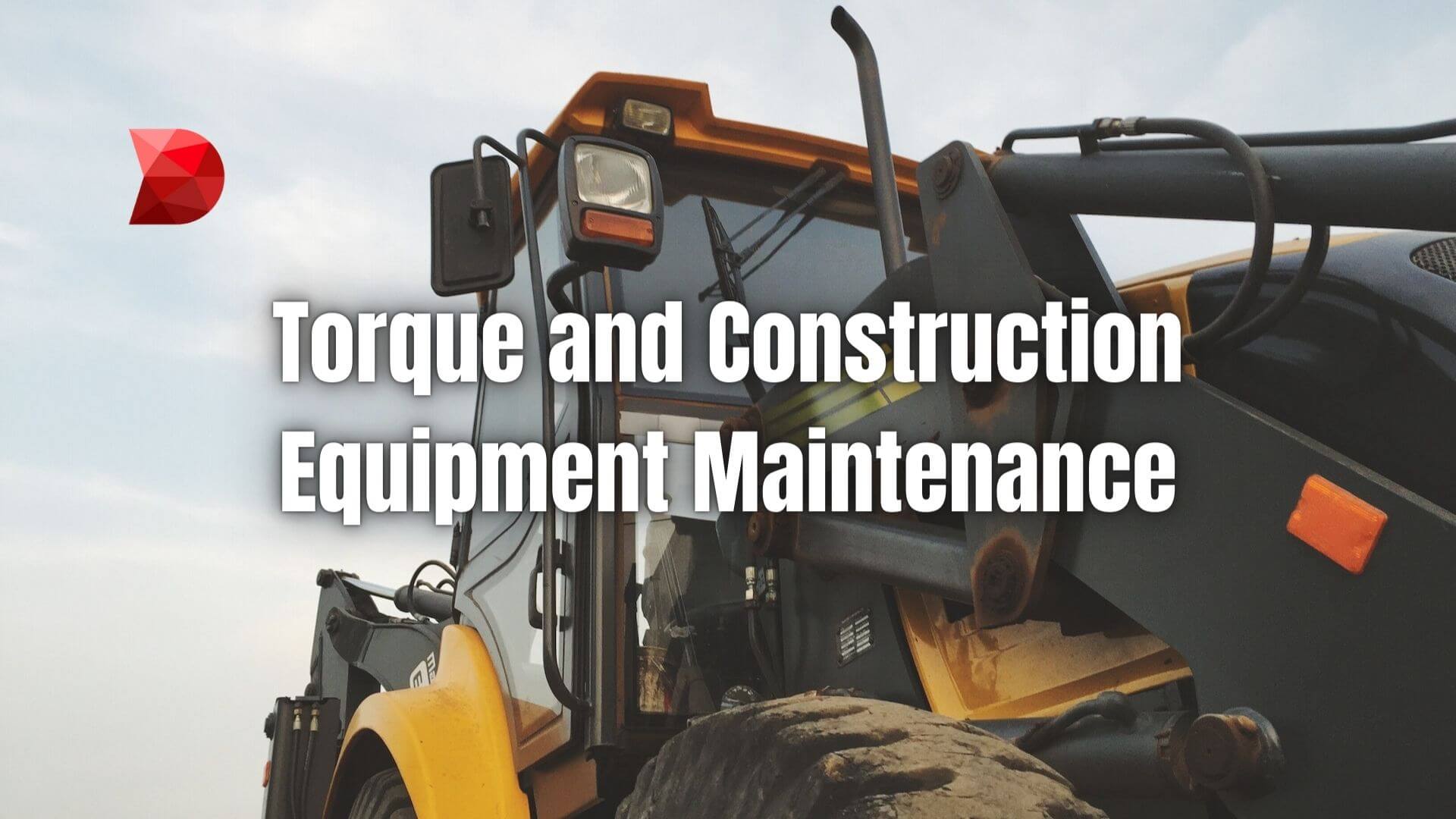For a safe and effective equipment operation, it is crucial to incorporate the right torque measurements into maintenance plans for construction equipment. Manufacturers commonly include torque settings in equipment manuals, and service technicians should apply these correctly using the proper instruments and technologies. To ensure the equipment’s dependable functioning, the operators’ safety, and the project’s overall success, routine maintenance procedures should include inspections and corrections of torque-sensitive components.
Table of Contents
ToggleWhat is Torque?
An essential concept in equipment maintenance is torque, which measures how much force is exerted on a component, causing that particular component to rotate. It’s necessary to understand torque, how it relates to specific tasks, and what equipment is ideal when purchasing, repairing, and ensuring bolt-fastening equipment.
Why is Torque Important In Construction Equipment Maintenance?

Given how a tiny loose bolt could mean a string of equipment malfunctions and interrupted operations, torque’s importance in equipment maintenance can’t be undermined. Here’s how torque applies to maintenance in construction equipment:
- Bolts, fasteners & nuts: Construction equipment machines are put together using a large assortment of fasteners, bolts, and nuts. Inadequate torque can cause these components to loosen over time, compromising the structural integrity of the machinery as well as constituting safety risks. On the other hand, excessive tightening can also cause component failure or striped threads. Proper torque must be used during assembly and upkeep to ensure that these parts are firmly secured.
- Preventive Maintenance: Regular maintenance includes checking, lubricating, and tightening different parts. To avoid wear, lower the risk of malfunction, and lengthen the equipment’s function, these maintenance procedures must be performed in accordance with the manufacturer’s suggested torque settings.
- Alignment and Calibration: Cranes and excavators are examples of construction machinery that need exact alignment and calibration to operate correctly. Proper torque is essential to guarantee precise calibration and proper component positioning in these circumstances.
- Hydraulic Systems: Fittings, connections, and hoses in hydraulic systems often require to be torqued to a specific degree. Proper torqued connections guarantee that the hydraulic system runs smoothly and without leaks.
- Routine Inspections: Technicians may need to remove and replace several components during normal inspections. When reinstalling equipment, adhering to torque standards helps preserve consistency in the equipment’s functioning and lowers the possibility of errors.
How is Torque Testing Conducted?
Torque testing helps ensure that the right amount of torque is used to preserve mechanical components’ reliability, safety, and efficiency. Depending on the particular needs of a machine’s equipment, torque testing may be done using various techniques and tools. Here is an overview of a typical procedure for torque testing:

The Movement Check
Movement check is a process that is carried out after a fastener (such as a bolt or nut) has been torqued to the desired value. Any rotational movement or loosening of the fastener after it has been torqued is the subject of a movement inspection. This is crucial in applications where the attached connection’s integrity and safety are at stake. A wrench with a torque meter is used to determine the torque in the fastener.
The Loosening Check
With the exception of applying an additional force to the secured bolt in the loosening direction, the loosening test, also known as the breakaway test, functions similarly to the movement check. Take a reading and pinpoint the spot where the bolt comes loose. The torque supplied to the bolt should initially correspond to the torque required to loosen it.
The Marking Check
The marking check involves a process where a fastener or component is marked or visually indicated after being torqued to a certain value. A marking check is used to visually certify that the torquing procedure for a specific fastener or assembly has been finished. This check is frequently used in quality control and maintenance procedures to ensure all essential torquing actions have been taken.
Streamline Torque Measurements and Testing With DATAMYTE
Looking for a more simplified and precise approach to torque measurements and testing? DATAMYTE has you covered! Our LightStar™ Torque Wrench is specifically designed to provide highly accurate and reliable torque measurements for all your maintenance and quality control needs. Say goodbye to guesswork—our digital torque solutions ensure precise, consistent, and verifiable results every time.
With DATAMYTE’s LightStar™ Torque Wrench, you get real-time digital readings that can be stored for further analysis and comparison. This helps improve traceability, compliance, and efficiency, ensuring that every fastener meets the required specifications.
Additionally, DATAMYTE’s advanced torque management solutions allow for comprehensive data collection, trend analysis, and proactive maintenance insights. Our system supports layered process audits (LPA) and high-frequency evaluations of critical process steps, identifying potential risks before they lead to failures or non-compliance issues.
With DATAMYTE, you gain a complete solution for accurate, efficient, and data-driven torque measurement and control. Book a FREE DEMO today and discover how our Torque Wrench can elevate your operations!
Conclusion
Conducting a quality torque testing system with DATAMYTE through accuracy and precision establishes a secure working machine equipment and work area.



